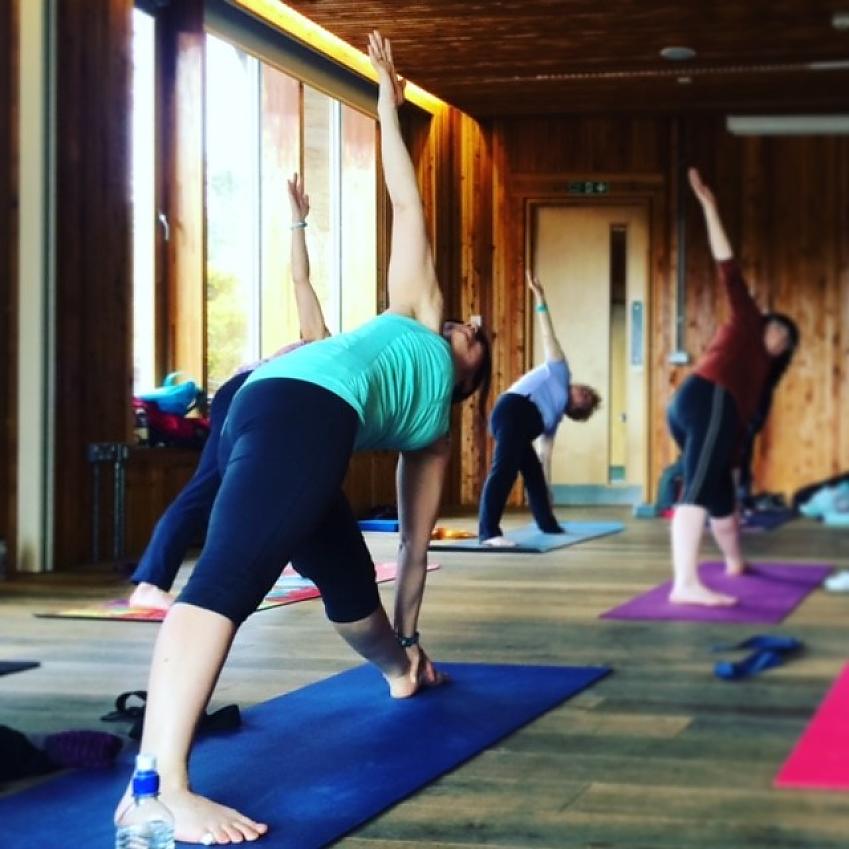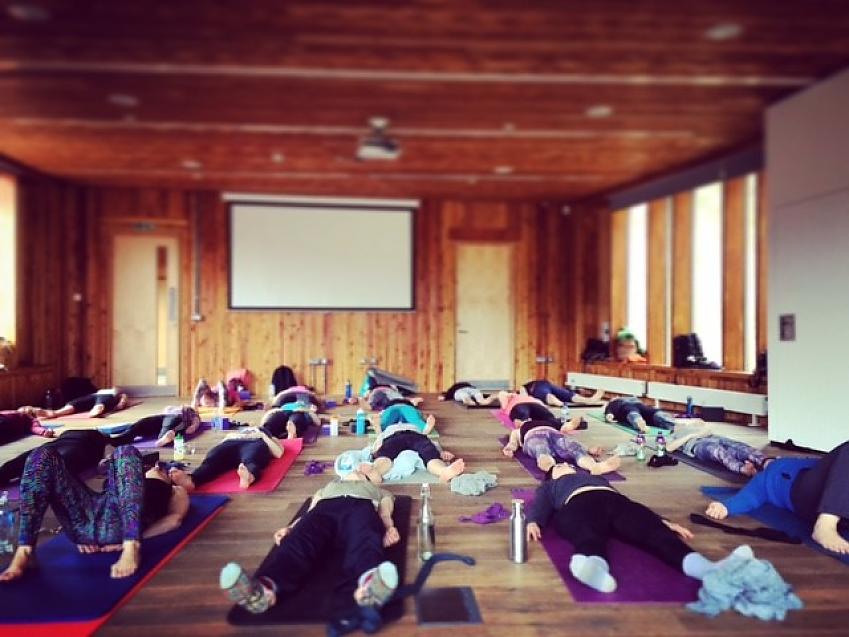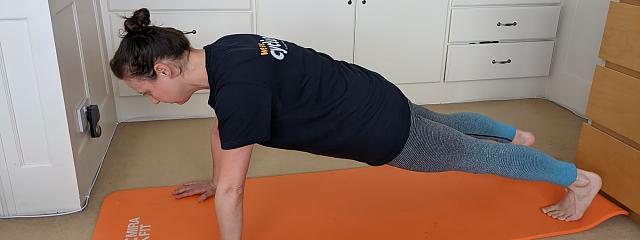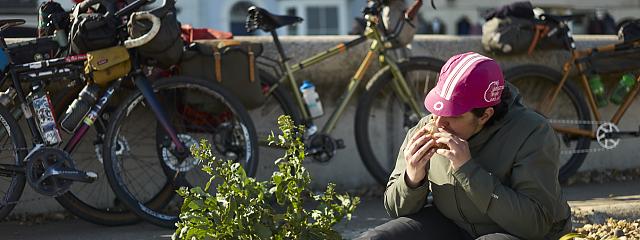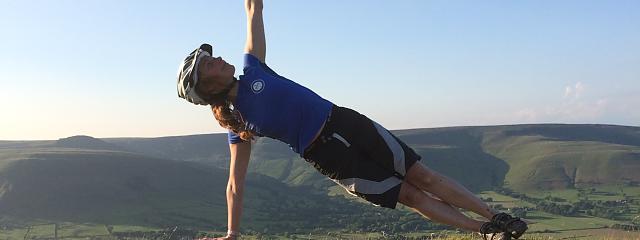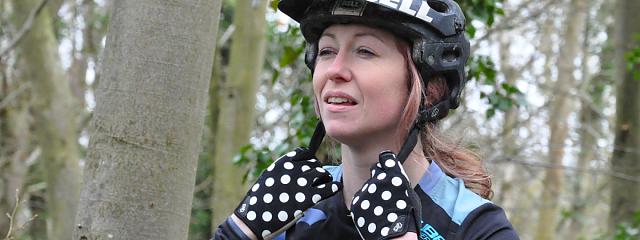
Yoga for cyclists
Yoga for cyclists
Why is yoga beneficial for cyclists?
Yoga is a system of philosophy and physical practices; it was used by ascetics to prepare the body and the mind to sit for long periods of time in meditation. During the late 1800s and early 1900s yoga was brought to the west by various yoga masters. Since then it has developed into many different styles – including those designed for cyclists. However they all spring from the same root and as such have very similar outcomes. Although there is a great deal of philosophy attached to yoga, it is not necessary to understand it in order to experience its benefits.
Better core strength
Developing good core strength is important for power on the bike, good posture, balance and injury prevention. Certain yoga poses such as plank and locust poses are excellent for increasing our core strength and protecting the lower back from injury. Yoga also tends to give whole body strength which will improve our form, efficiency and power.
Flexibility
The repetitive nature of cycling can create tightness in the hips, back and shoulders. In yoga we can learn to balance that tightness which will mean that we can stay comfortable on our bikes for longer. It will also aid your day to day lives, as they will not be thwarted with problems associated with having overly tight and unbalanced bodies.
Balance
Yoga can increase our proprioception which gives us more awareness of where our bodies are in space. We can become more connected to our centre of gravity which can help us to find balance on uneven surfaces. Yoga is also a good balance to other training which can give us the chance to unwind and renew.
Focus
Yoga is very much a mental discipline. Through yoga practice we learn how to integrate body, mind and breath. Being able to stay calm and control your breathing while in challenging poses is a highly transferrable skill. We can take this off the mat and onto our bikes to help us during a race or even just a challenging climb.
Breathing and posture
The practice of yoga improves our posture by increasing our core strength and improving flexibility through the whole body. As our posture improves so does our breath. The breath can be limited by tightness in the upper body. As we start to release our intercostal muscles and create a more supple torso we can also learn how to breath more efficiently, which will increase our oxygen intake and help us up those steep climbs!
Non-competitiveness
One big difference between yoga and sports such as cycling is to do with effort. As cyclists we often push ourselves to our limits and beyond and that’s how we improve our fitness. We may always push to be faster than everyone else. With yoga we still make effort but we aim to balance our effort with relaxation. If you find yourself straining or struggling to breathe you are pushing too hard. It’s a different process, a process of inner focus and paying attention. The body needs time to release tightness. The aim is to work with your body and not compare yourself to anyone else.
Good for life!
Whilst yoga is brilliant for cyclists it’s also just brilliant for improving quality of life. I don’t know how many times I have been told as a yoga teacher, “This has changed my life, I don’t know what I would do without it!” And while you may never stand on your head or achieve any of those amazing yoga poses you see on Instagram, you may be able to keep cycling with fewer injuries, stay mobile as you get older and feel good in your body. Most classes will have a period of time at the end where you get to practice Savasana or the Corpse pose. This involves lying down and consciously relaxing the body, mind and breathing. For most people this is the best part of the class - how often in life do we get to just spend five minutes being quiet with no demands on us?
Do I need special equipment?
It’s nice to have your own yoga mat and prices range from £15 to £100. Most mats will last you over 10 years. You also don’t need to go and buy expensive yoga clothes. Just wear whatever you have that’s stretchy and comfortable.
I’m so inflexible - won’t everyone laugh at me?
Most people in a class are far too busy focussing on what they are doing and are extremely unlikely to be looking at you. Plus, every single person will have experienced going to their first class and will know exactly how you are feeling. Everybody is different and you will find that you can achieve some things easily and others not so much. Remember, you are going to a yoga class to improve your flexibility.
How do I start?
These days there are a huge variety of classes to choose from, stacks of online content as well as a myriad of books. I would recommend finding a local class you can participate in. Once you have a bit more experience online classes can work for those who have time constraints and there are a few really good books available too.
It’s a good idea to get a friend or partner to join you, as it’s much easier to stay motivated when someone else is involved!
Popular styles of yoga being taught in the UK at the moment.
Hatha Yoga: Most classes if not specified will be a type of Hatha Yoga. These classes are usually slower and more static and are great if you have a busy life and just need to slow down, focus and relax.
Ashtanga Yoga: This is a strong dynamic style of yoga which is often attractive to athletes. It requires and also builds a lot of upper body strength so is not so great for anyone with any shoulder issues. This practice follows a set sequence of poses which get more difficult as you progress. Great for if you feel like you need a good workout.
Vinyasa Flow: This is form of freestyle ashtanga. Poses are linked together with the breath in flowing sequences. A bit more gentle than Ashtanga so a good place to start if you like a dynamic practice and want to build up some strength and fitness.
Hot Yoga: Definitely a trend at the moment. Classes are in rooms heated to 105 degrees which allows the muscles to stretch deeply. Be careful not to overstretch and drink plenty of water.
Iyengar Yoga: This is a very precise static form of yoga which can help to build strength. Poses are practiced one at a time and held for a longer period. Good for focus and concentration as well as being good for people practicing with injuries.
Yoga for Cyclists: You might be lucky enough in your area to have a specific class for cyclists. More of these type classes are popping up. If you have a busy cycling club why not ask a local yoga teacher if they will put on a class for you all.
Online classes: There are various online yoga classes. Just be careful as you can injure yourself doing yoga so make sure you choose a class that is suitable for your level.
Recommended books: “Yoga for Cyclists” by Lexie Williamson and “The Athletes Guide to Yoga” by Sage Rountree.






